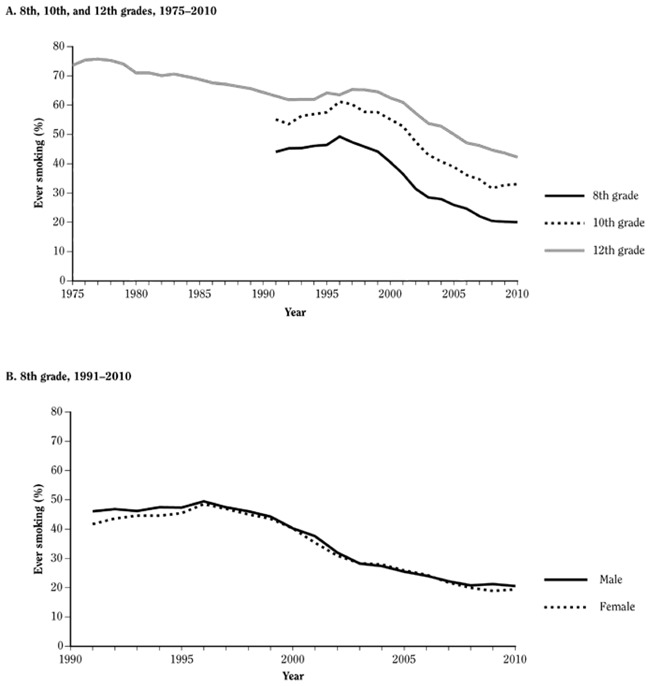From: 3, The Epidemiology of Tobacco Use Among Young People in the United States and Worldwide

Preventing Tobacco Use Among Youth and Young Adults: A Report of the Surgeon General.
National Center for Chronic Disease Prevention and Health Promotion (US) Office on Smoking and Health.
Atlanta (GA): Centers for Disease Control and Prevention (US); 2012.
NCBI Bookshelf. A service of the National Library of Medicine, National Institutes of Health.

